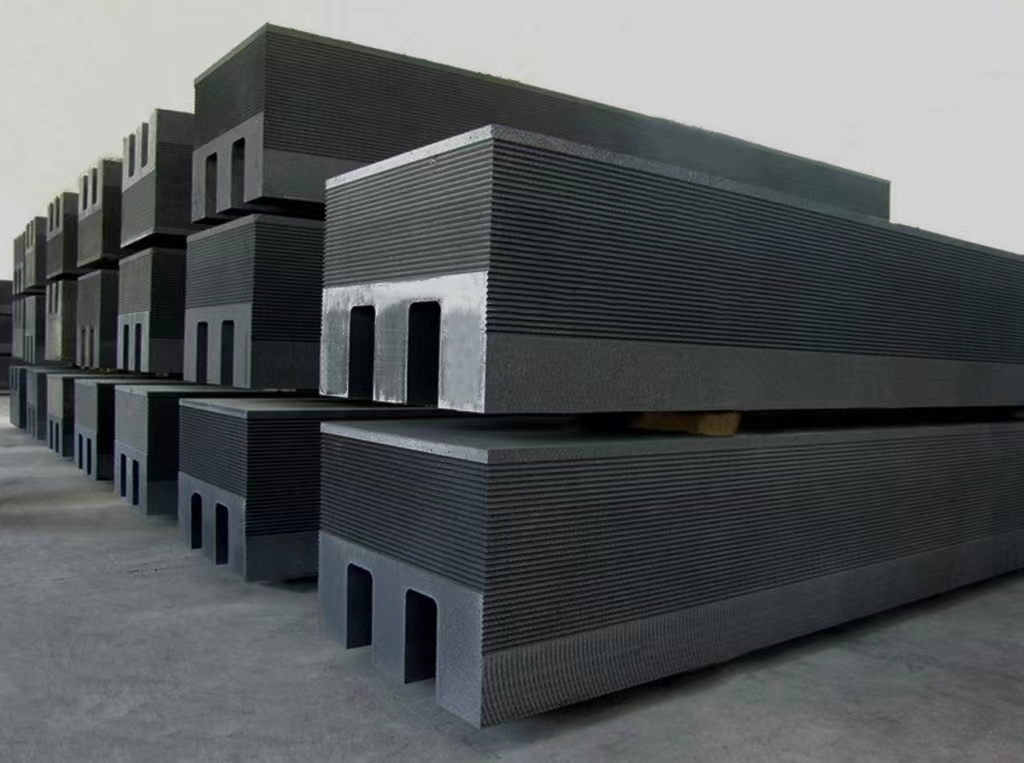

Bottom carbon block, situated at the base of electrolytic cells, assumes a dual role of conducting electricity and forming the cell's lining. It comes in different types ordinary, semi-graphite, and graphite each tailored to specific manufacturing processes.
Meanwhile, side carbon blocks, used in constructing the cell's sidewalls, have seen advancements with the adoption of silicon nitride combined with carbonized silicon blocks, reducing reliance on traditional carbon blocks.
Connecting these blocks to the cathode circuit are cathode steel rods, available in single or double rod assemblies. Raw materials for cathode carbon blocks include anthracite, pitch coke, natural and artificial graphite, and coal tar, processed through calcination, crushing, sieving, and kneading to form cathode paste. This paste undergoes further processes to produce cathode carbon blocks, ensuring optimal performance and adaptability to diverse industrial needs.
Bottom blocks come in different widths, heights, and lengths, with corresponding tolerances for each dimension. Widths range from 665mm to 400mm, heights from 480mm to 400mm, and lengths from 3680mm to 1600mm. Sidewall blocks also vary in width, height, and length, with tolerances indicated for each dimension. Widths range from 355mm to 400mm, heights from 123mm to 130mm, and lengths from 520mm to 500mm. These precise specifications ensure the proper fit and functionality of the blocks within their respective industrial processes, contributing to efficient and reliable operations.
